当前位置:网站首页>Recommended usage scenarios and production tools for common 60 types of charts
Recommended usage scenarios and production tools for common 60 types of charts
2022-04-23 20:44:00 【Python data mining】
There are so many kinds of visual charts , What kind of chart should be used in what scenario , It's a bald problem .
Data visualization enthusiasts Severino Ribecca, He included... On his website 60 There are three kinds of visualization chart styles and what kind of scenes they are suitable for , And recommended the corresponding production tools .
Lattice diagram

Dot matrix diagram (Dot Matrix Chart) Display discrete data in points , The dots of each color represent a specific category , And put them together in matrix form .
It can be used to quickly view the distribution and proportion of different categories in a dataset , And compare it with other data sets , It's easier to find patterns .
Dot graph

Dot graph (Point & Figure Charts) Also known as 「P&F chart 」, Use by X and O A series of squares composed of symbols to show the supply and demand relationship of a specific asset .
This chart has nothing to do with time , Mainly focus on the filter price performance of assets ; It also doesn't show the volume of transactions , The purpose is just to show any change in supply and demand , be called 「 breakthrough 」(breakouts).
The recommended tools are :rpnf.
Arc chart

Arc chart (Arc Diagram) It's another way of data expression besides two-dimensional biaxial chart . In the arc graph , Nodes will follow X Axis placement , Then the arc is used to represent the connection between nodes .
The arc chart is suitable for finding situations where data are common . But the disadvantage is : It can't show the structure and connection between nodes as clearly as other two axis charts , And too many connections can make the chart difficult to read .
The recommended tools are :Protovis ( programing language )、D3 ( programing language ).
Broken line diagram
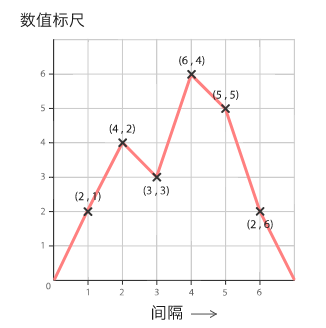
A line chart is used to display quantitative values over successive intervals or time spans , Most commonly used to show trends and relationships .
Besides , A line chart can also show... In a certain period of time 「 Overall overview 」, Take a look at the development of data over this period of time .
The recommended tools are :MS Excel、Apple Numbers、D3、DataHero、Datamatic、Datawrapper、Envision.js、Google Charts、Google Docs、Infogr.am、OnlineChartTool.com、SlemmaVega.
Parallel graph

Parallel graph (Parallel Coordinates Plots) It can display multivariable numerical data , Most suitable for comparing multiple variables at the same time , And show the relationship between them .
When data is dense , Parallel graphs tend to be confusing 、 Illegible . The solution is through interactive technology , Highlight the selected line or lines , And fade all the other lines , Let's focus more on what we're interested in , And filter out the interference data .
The recommended tools are :D3、Protovis、RAWGraphs、The R Graph Gallery、Vega.
Network diagram

Also known as 「 Web map 」 or 「 Node link graph 」, Used to show the type of relationship between things .
These nodes are usually dots or small circles , But you can also use icons .
The main network diagrams are as follows 「 Not oriented 」 and 「 directional 」 Two kinds of . An undirected network diagram shows only the connections between entities , The directed network diagram shows whether the connection is unidirectional or bidirectional ( Through the little arrow ).
Network graph data capacity is limited , And when there are too many nodes, it will form a similar 「 Hairball 」 The design of , Make it difficult to read .
The recommended tools are :Cytoscape、Datamatic、Gephi、Graph-tool、Mike Bostock’s Block、Plot.ly、sigmajs、Vega、ZoomCharts.
Pictogram

Pictogram (Pictogram Chart) Also known as 「 Pictograph 」, Use patterns to show the amount of data .
Using patterns can overcome language 、 Cultural and educational differences , It is a more representative method of data display . for instance , If the data is 「5 Vehicles 」, The picture will show 5 A car design .
The recommended tools are :Infogr.am、jChart.
Histogram

Histograms are suitable for displaying the distribution of data at successive intervals or within a specific period of time , It helps to estimate the location of the value set 、 The upper and lower limits and the determination of whether there are gaps or outliers ; The probability distribution can also be shown roughly .
The recommended tools are :MS Excel、Apple Numbers、D3、Datavisual、Google Docs、Infogr.am、OnlineChartTool.com、Protovis、R Graph Gallery、Slemma.
Density map

Density map (Density Plot) Also known as 「 Density curve 」, Used to display the distribution of data in a continuous period of time .
This chart is a variation of the histogram , Use smooth curves to draw numerical levels , So we get a smoother distribution , And they are not affected by the number of packets used , So we can better define the shape of the distribution .
The recommended tools are :The R Graph Gallery、Cookbook for R.
Population pyramid

Population pyramid (Population Pyramid) Also known as 「 Age gender pyramid 」, It's a back-to-back pair of histograms , Show the distribution of all age groups and the male and female population .
The population pyramid is best used to detect changes or differences in population patterns . Multiple population pyramids put together can be used to compare population patterns between countries or different groups .
The recommended tools are :AnyChart、D3 ( Overlapping versions )、Vega、ZingChart.
Bar chart

Bar chart (Bar Chart) Also known as 「 Bar chart 」 or 「 Bar charts 」, Use horizontal or vertical bars ( Bar charts ) To compare different classes of discrete values .
One of the axes in the chart represents the specific category to be compared , The other is used as a scale for discrete values .
The discrete data of bar chart is classified data , It's about the number in a single category , It doesn't show the continuous development of the value in a certain period of time .
The recommended tools are :MS Excel & Apple Numbers、AnyChart、D3 、DataHero、Datamatic、Datawrapper、Google Charts、Google Docs、Infogr.am、OnlineChartTool.com、Protovis、Slemma、Vega、ZoomCharts.
Multiple sets of bar charts
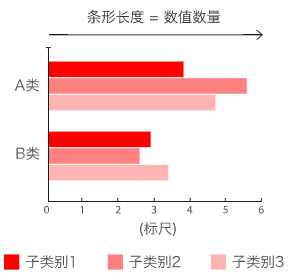
Groups of bars are also known as 「 Grouped bars 」 or 「 Double bar chart 」, It's a variation of the bar chart .
Multiple sets of bars are often used to compare grouped variables or categories with other data groups , Mini histograms can also be used to compare , Each bar in each group will represent the significant interval between variables .
But the disadvantage is , It's hard to read when there are too many bars together .
The recommended tools are :D3、DataHero、Datavisual、Datawrapper、Infogr.am、NVD3.js、R Graph Gallery、Slemma、Vega、Visage、ZoomCharts.
Stacked bar chart
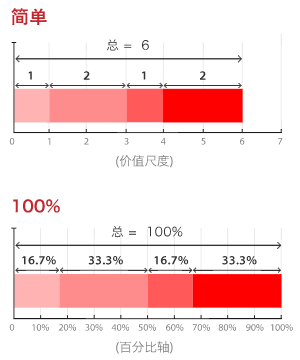
Unlike multiple bar charts , Stacked bar chart (Stacked Bar Graph) Overlay the bars of multiple data sets with each other , Good for showing how large categories are broken down into smaller categories , And what's the relationship between each part and the total amount .
There are two types of stacked bar charts :
-
Simple stacked bar chart . Place segment values one by one , The total value of the bar is the sum of all the segment values , Suitable for comparing each group / The total number of segments .
-
100% Stacked bar chart . The percentage of each group as a whole will be displayed , And draw according to the percentage of each value in the whole group , It can be used to show the relative difference between the numbers in each group .
The recommended tools are :MS Excel、Apple Numbers、AnyChart、Datavisual、Datawrapper、Infogr.am、Slemma、ZingChart、ZoomCharts.
Unequal width histogram

Unequal width histogram (Marimekko Chart) Also known as 「 Mosaic 」, Used to show the relationship between a pair of variables in classified data , The principle is similar to bidirectional 100% Stacked bar chart , But all the bars in it are numerical / The scale axis has equal length , And it's divided into segments .
The main disadvantage of unequal width histogram is that it is difficult to read , Especially when there are lots of segments . Besides , It's also difficult to accurately compare each segment , Because they're not aligned along a common baseline .
therefore , The unequal width histogram is more suitable for providing an overview of the data .
The recommended tools are :D3.
Area map

Area map (Area Graph) It's a kind of line chart , But the area below the line is filled with color or texture .
Just like a line chart , The area chart can show the change and development of quantitative values in a certain period of time , Most commonly used to show trends , It's not a specific number .
Two more commonly used area charts are grouped area charts and stacked area charts . The grouped area chart starts with the same zero axis , The stacked area chart starts from the last data point of the previous data series .
The recommended tools are :MS Excel & Apple Numbers、D3、DataHero、Datamatic、Google Charts、Google Docs、Infogr.am、Protovis、Slemma、VegaOnlineChartTool.com.
Scale area

It's a great way to compare values and scale ( Size 、 Quantity, etc ), In order to quickly and comprehensively understand the relative size of data , Without using a scale .
A scale area chart usually uses a square or a circle , Common technical errors are , Use length to determine shape size , Instead of calculating the area of space in a shape , This leads to an exponential increase and decrease in values .
The recommended tools are :D3、Datamatic、Datavisual、Infogr.am
Stacked area chart

Stacked area chart (Stacked Area Graph) The principle is the same as that of a simple area graph , But it can display multiple data series at the same time , The starting point of each series is the ending point of the previous data series .
Stacked area charts use area areas to represent integers , So it doesn't apply to negative values . in general , They are suitable for comparing changes in multiple variables within the same interval .
The recommended tools are :MS Excel、Apple Numbers、DataHero、Datavisual、Google Docs、Infogr.am、OnlineChartTool、Slemma、Vega、ZingChart、ZoomCharts.
Quantized waveforms

This chart is a variation of the stacked area chart , But the value is not drawn along a fixed line axis , It's around a changing central baseline .
By using flowing organic shapes , Quantized waveforms (Stream Graph) Different types of data can be displayed over time , It's kind of like these organic rivers , So the quantization waveform looks pretty good .
In the quantization waveform , The shape and size of each wave is proportional to the number in each category . The axis that flows parallel to the waveform is used as a time scale . We can also use different colors to distinguish each category , Or change the color to show the additional quantitative value of each category .
Besides , When they show it interactively , More efficient than static or printed .
The recommended tools are :Bob Rudis’ GitHub、D3、infogr.am、JSFiddle、Lee Byron’s GitHub、NVD3.js、plotDB、Protovis、RAWGraphs、Stream graph generator.
Radar map

Radar map (Radar Chart) Also known as 「 Spiders 」、「 Polar map 」 or 「 Star map 」, It's a way to compare multiple quantitative variables , Can be used to see which variables have similar values , Or if there are any outliers in each variable .
Besides , Radar charts can also be used to see which variables in the dataset score higher / low , Ideal for display performance .
Each variable has its own axis ( Start from the center ). All the shafts are arranged radially , The distance between them is equal , All axes have the same scale . The grid lines between the axes are usually used for guidance only . The value of each variable is drawn on its axis , All the variables in the dataset will be joined together to form a polygon .
The recommended tools are :Amcharts、AnyChart、Google Docs、jChartFX、Online Chart Tool、ZingChart.
Sanguitu

Sanguitu (Sankey Diagram) Used to show the flow direction and quantity .
At each stage of the process , Flow arrows or lines can be grouped together , Or separate them in different ways . We can use different colors to distinguish the different categories in the chart , Or represents a transition from one stage to another .
The recommended tools are :RAWGraphs、Sankey Diagram Generator、Sankey Diagrams Blog Software List、Sankey Flow Show、SankeyMATIC、Tamc.
Parallel set graph

Parallel set graphs are similar to Sankey graphs , Both show flow and scale , But parallel set graphs don't use arrows , They are in each displayed line set (line-set) Divide the process path .
Each line set corresponds to a dimension / Data sets , Its value / The different classes of line segments represented by the set of lines . The width of each line and the flow path , It is determined by the proportion of the total number of categories . Each process path can be represented by different colors , To show and compare the distribution between different categories .
Recommended tools are :EagerEyes: ParallelSets、Jason Davies、Sankey Diagram Generator、SankeyMATIC.
Error line

Error bars can be used as an enhancement to show data changes , It is usually used to display the standard deviation in a range dataset 、 Standard error 、 Confidence interval or minimum / Maximum .
The error line is always parallel to the axis of the quantitative scale , It can be vertical or horizontal ( Depending on the quantitative scale is in Y Axis or X On the shaft ).
The recommended tools are :AnyChart、Highcharts、plotly、Vega.
Tree structure

Tree structure (Treemap) It's a way to use nested rectangles to show hierarchies , At the same time, the number of each category is displayed by area size .
Each category is assigned a rectangular area , Its subcategories are represented by nested rectangles . When different quantities are assigned to each category , The area of these rectangles is proportional to this number .
Ben Shneiderman The tree structure diagram was originally developed to display a large number of file directories on the computer , It doesn't take up too much screen space , Therefore, the tree structure diagram is a compact and space saving hierarchical display , It allows people to quickly understand the structure .
The recommended tools are :AnyChart、D3、Datamatic、Google Charts、Google Docs、Infogr.am、jChartFX、RAWGraphs、Slemma、Vega、ZingChart.
Circle packing
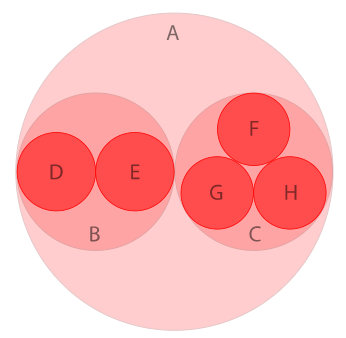
Circle accumulation (Circle Packing) Also known as 「 Circular tree structure 」, It's a variation of the tree structure , Use circles ( Instead of rectangles ) Layer by layer represents the entire hierarchy .
The area of each circle can also be used to represent any additional value , Such as quantity or file size . We can also use color to classify the data , Or represent another variable by different hues .
Although the round pile looks beautiful , But it's not as space saving as a tree ( Because there's a lot of space in the circle ), But it's actually more effective than a tree diagram in showing hierarchies .
The recommended tools are :D3、D3 Zoomable、RAWGraphs.
The pie chart

Pie chart (Pie Chart) Divide a circle into segments of different proportions , To show the proportions between the categories .
The pie chart is suitable for quickly displaying the proportional distribution of data , But the main drawback is : Can't show too many items 、 You usually need a legend 、 Can't exactly compare .
There are many tools for making :D3、DataHero、Datamatic、Datavisual、Datawrapper、Google Charts、 Google Docs、Infogr.am、Protovis、OnlineChartTool.com、Slemma、ZingChart…
Doughnut

Doughnut (Donut Chart) It's basically a pie chart , It's just that the middle part is cut off .
however , The doughnut chart still has a slight advantage over the pie chart , It makes people no longer just look at 「 cake 」 The area of , On the other hand, we pay more attention to the change of population value : Focus on reading the length of the arc , Instead of comparing 「 Cakes and cakes 」 There are different proportions between .
in addition , The space in the middle of the circle can be used to display other information , So it saves more space .
The recommended tools are :D3、DataHero、Datamatic、Datavisual、Datawrapper、Google Docs、Infogr.am、Protovis、Slemma、Visage、ZingChart、ZoomCharts.
Nightingale rose

Nightingale rose (Nightingale Rose Charts) Also known as 「 Polar area 」.
Statistician and medical reformer Florence ‧ Nightingale (Florence Nightingale) It was used during the Crimean War to convey the deaths of soldiers , Therefore, the name .
In the Nightingale rose , What represents the numerical value is the sectional area , Not its radius .
The recommended tools are :Datamatic、Infogr.am.
Sunrise chart

Also known as 「 Multi layer pie chart 」 or 「 Radial trees 」, Show hierarchy through a series of circles , Then cut according to different types of nodes .
The recommended tools are :Aculocity、D3、JavaScript InfoVis Toolkit、MS Office、Protovis、RAWGraphs、
Spiral chart

Also known as 「 Time series spiral 」, Along the Archimedean spiral (Archimedean spiral) Time based data .
The chart starts at the center of the spiral and goes out . The spiral is very variable , You can use bars 、 Lines or data points , Display along the spiral path .
Spirals are great for displaying large datasets , It usually shows data trends over a long period of time , Therefore, it can effectively display periodic patterns .
The recommended tools are :Arpit Narechania’s Block.
Radial bar chart

A radial bar chart is a bar chart drawn in polar coordinates .
Although it looks beautiful , But the length of the bar on a radial bar chart can be misunderstood .
The recommended tools are :AnyChart.
Radial histogram

Also known as 「 Round column 」 or 「 Star map 」.
This chart uses concentric circles to draw a bar graph . Each circle represents a numerical scale , The radial divider is used to distinguish between different categories or intervals ( If it's a histogram ).
The bar usually extends outward from the center point , But you can also start somewhere else to show the range of values ( As the span diagram ). Besides , Bars can also be stacked like stacked bars .
The recommended tools are :jChartFX、Bokeh.
Thermogram

Thermogram (Heatmap) Display data by changing colors , When applied to tables , Thermograms are suitable for cross checking multivariable data .
Heat maps are used to show differences between multiple variables ; Show any of the modes ; Shows whether there are variables similar to each other ; And detecting whether there is any correlation between them .
Because heat maps depend on color to express numerical values , It is more suitable for displaying a wide range of numerical data , Because it's always difficult to pinpoint the differences between colors , It is also difficult to extract specific data points from it ( Unless you add raw data to the cell ).
The recommended tools are :MS Excel、Apple Numbers、Amcharts、AnyChart、Highcharts、jChartFX、plot.ly、R Graph、Zing Chart.
Scatter plot

Scatter plot (Scatterplot) Also known as 「 Point graph 」、「 Scatter map 」 or 「X-Y Point graph 」, Used to display the values of two variables ( Each axis shows a variable ), And detect whether the relationship or correlation between the two variables exists .
A straight line or curve can be added to the chart to aid analysis , And show what it looks like when all the data points are condensed into a single line , Often referred to as 「 Best fit line 」 or 「 Trend line 」.
If you have a pair of numerical data , You can use a scatter plot to see if one of the variables is affecting the other . But remember , Correlation is not causality , There may also be another variable that affects the result .
The recommended tools are :MS Excel、Apple Numbers、D3、DataHero、Datavisual、Google Charts、Google Docs、Infogr.am、OnlineChartTool.com、Vega、Visage、ZingChart.
Bubble chart

A bubble chart is a chart that contains multiple variables , A combination of scatter plot and scale area plot , The size of the circle needs to be drawn according to the area of the circle , Not its radius or diameter .
By using location and scale , Bubble charts are usually used to compare and display marked / The relationship between sorted circles .
But , Too many bubbles can make the chart hard to read , But we can solve this problem by adding interactivity to the diagram ( Click or hover over the bubble to show hidden information ), You can also choose to reorganize or filter grouping categories .
The recommended tools are :AnyChart、Google Charts、Google Docs、Infogr.am、jChartFX、Online Chart Tool、RAWGraphs、Slemma、Visage、ZingChart
Bubble map

In this kind of data map , A circular pattern will appear above the specified geographic area , The area of the circle is proportional to its value in the dataset .
Bubble maps are suitable for comparing the proportions between different geographic regions , It's not affected by the size of the area . But the main drawback of bubble maps is : Too large bubbles may overlap with other bubbles or areas on the map .
The recommended tools are :AnyChart、CARTO、Datavisual、Khartis、Google docs、Polymaps、ZoomCharts.
Regional map

Area maps are usually used to show the relationship between different areas and data variables , And the numerical changes or patterns of the displayed position are visualized .
We represent data variables in different shades of color in each area of the map , For example, from one color to another 、 Monochrome graduals 、 From transparent to opaque 、 From light to dark , Even the whole spectrum .
But the disadvantage is that it is unable to accurately read or compare the values in the map . Besides , Larger areas are more visible than small areas , Affect the reader's perception of numerical values .
Common mistakes in mapping areas : The original value is the same as the original data ( For example, population ) Carry out operations , Instead of using normalized values ( example : Calculate the population per square kilometer ).
The recommended tools are :amMaps、D3、d3.geomap、Google Charts、Google Docs、DataHero、Datamatic、Datawrapper、Infogr.am、Kartograph、Polymaps、Slemma、Target Map.com、Vega.
Point map

Point map (Dot Map) Also known as 「 Point to point distribution 」 or 「 Dot plot density map 」. Place dots of equal size on a geographic area , It aims to detect the spatial layout or data distribution in the region .
There are two kinds of point map : one-on-one ( Each point represents a single count or an object ) And one to many ( Each dot represents a specific unit , for example 1 spot = 10 tree ).
Point map is very suitable for viewing the distribution and pattern of objects in a certain area , And it's easy to master , Can provide data overview .
The recommended tools are :AnyChart、CARTO、Datavisual、Infogr.am、Khartis、mbostock’s blocks、R Graph Gallery、ZoomCharts.
Link map

Link map (Connection Map) It is a chart that connects different places on a map with straight lines or curves .
Connectivity maps are great for showing geographic connections and relationships , We can also show the spatial pattern by studying the connection distribution or concentration degree on the connection map .
The recommended production tool is :AnyChart、ECharts、Javascript Maps、Curved、Straight、ZoomCharts.
Flow map
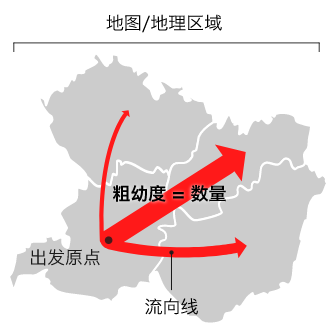
Flow map (Flow Map) Show the movement of information or objects from one location to another and the number of them on a map , It's usually used to show people 、 Migration data for animals and products .
The scale or amount of movement represented by a single flow line is represented by its coarseness , It helps to show the geographic distribution of migration activities .
The recommended tools are :AnyChart.
Gantt Chart

Gantt Chart (Gantt Chart) Often used as an organizational tool for project management , Show activity ( Or task ) List and duration , It also shows when each activity starts and ends .
Gantt chart is suitable for planning and estimating the time required for the whole project , It can also show overlapping activities .
The recommended tools are :AnyChart、Amcharts、DHTMLX、GanttPro、Google Charts、Redbooth、RAWGraphs、Smartsheet.
Box chart

The box diagram is also called 「 Box picture 」 or 「 boxplot 」, It can display the quartile of digital data group conveniently , It can appear vertically or horizontally .
The lines extending from both ends of the box are called 「 whisker 」(whiskers), It's used to show up 、 Variables other than the lower quartile . outliers (Outliers) Sometimes it is represented by a single data point at the same level as the whisker .
Box charts are usually used for descriptive statistics , It's a great way to quickly view one or more datasets graphically .
The recommended tools are :AnyChart、D3、Protovis、R AWGraphs、R Graph Gallery、ZingChart.
Bullet diagram

Bullet diagram (Bullet Graph) It's similar to a bar chart , But add more visual elements , Provide more supplementary information .
The bullet diagram was originally made by Stephen Few Development , It is used to replace graphic instruments such as odometer or speedometer on the dashboard , Solve the problem of insufficient display information , And it can effectively save space , It can also remove some unnecessary things from the instrument panel .
The recommended tools are :am chartsAnyChart、D3、DimpleJS、IgniteUI、jChartFX 、moderndata.plot.ly、NVD3.js、Protovis.
Candlestick Charts

also called 「 Japan K Line graph 」, Usually used to display and analyze Securities 、 Derivatives 、 Foreign currency 、 Stocks 、 The price of commodities such as bonds changes over time .
The candle chart shows a variety of price information by using the symbol of candlestick , For example, the opening price 、 Closing price 、 The highest price and the lowest price , Each represents a single period of time ( Every minute 、 Every hour 、 Every day or every month ) Trading activities of . Each Candlestick symbol follows X The time scale on the axis draws , Show trading activity over time .
however , The candle chart can only show the relationship between the opening price and the closing price , It's not what happened between the two , So it can't be used to explain why trading is volatile .
The recommended tools are :Aaron Beppu’s Block、amcharts、AnyChart、CanvasJS、ECharts、Google Chart、Google Docs、infogr.am、plotly、Protovis、ZingChart、ZoomCharts
Span chart

Also known as 「 Range bar / Bar charts 」 or 「 Floating bar chart 」, Used to show the range between the minimum and maximum values in a dataset , It's good for comparing ranges , Especially the classified range .
Span charts focus on extreme values , No value between minimum and maximum is provided 、 Other information such as overall average or data distribution .
The recommended tools are :AnyChart、D3, Arpit Narechania’s Block、ZingChart.
Kajitu

Kajitu (Kagi Chart) It can show the price performance through a series of line segments , It then shows the general level of supply and demand for specific assets . Because it has nothing to do with time , It can show more clearly the important price trend .
The recommended tools are :D3、Arpit Narechania’s Block、FusionCharts、Ragu Ramaswamy’s Block、Wolfram Mathematica、
American line

American line (Open-high-low-close Charts) Also known as 「OHLC chart 」 or 「 Price chart 」, Usually used as a trading tool , Display and analyze Securities 、 currency 、 Stocks 、 The price changes of commodities such as bonds over time .
The recommended tools are :Amcharts、AnyChart、ByteMuse.com、CanvasJS、jChartFX、Plotly、vaadin、Zing Chart.
Chords

Chords (Chord Diagram) It can show the relationship between different entities and some things in common that they share with each other , Therefore, this kind of chart is very suitable for comparing the similarity between data sets or different data groups .
Nodes are distributed around the circumference , The points are connected with each other by arc or Bezier curve to show the relationship between them , And then assign values to each connection by the size ratio of each arc . Besides , You can also use color to divide data into different categories , It helps to compare and distinguish .
The recommended tools are :Circos、D3、R Graph Gallery、ZingChart.
Non ribbon string

Non ribbon string (Non-ribbon Chord Diagram) It's a simplified version of the chord diagram , Show only nodes and connectors , More emphasis on the connection between data .
The recommended tools are :Circos.
Tree diagram

Tree diagram (Tree Diagram) Also known as 「 Organization chart 」 or 「 Link diagram 」, It's a way of representing hierarchies through a tree structure .
It's usually structured by no superior / The parent member's element begins ( The root node ), And then add nodes , And then they're wired together , It's called a branch , Represents relationships and connections between members . Finally, the node of branches and leaves ( Or end nodes ), Is a member without child nodes .
Tree diagrams are often used to represent family relationships and lineages 、 taxonomy 、 Evolutionary science 、 Computer science and mathematics, etc , It is also a management tool for enterprises and organizations .
The recommended tools are :Datamatic、Google Charts、Google Docs、giffy、Zoomcharts.
flow chart

flow chart (Flow Chart) Use a series of interconnected symbols to draw the whole process , To explain complexity and / Or abstract process 、 System 、 How concepts or algorithms work .
Different symbols represent different meanings , Each has its own specific shape . The flowchart represents the beginning and end of a process with curved rectangles ; Line segments or arrows are used to show the direction or flow from one step to another ; Simple instructions or actions are represented by rectangles , And when decisions need to be made , Use diamond shape …
The recommended tools are :asciiflow、Creately、draw.io、gliffy、GoJS、Google Drawings、LucidChart、MS Visio.
Brainstorming map

Brainstorming is also known as 「 Mind map 」, You can put related ideas 、 word 、 Images and concepts come together .
Brainstorming maps are often used early in a project , To generate ideas 、 Find associations 、 Categorizing ideas 、 Organizational information 、 Show structure and general learning .
The recommended tools are :Coggle、MindMup
Notation charts

Notation charts (Tally Chart) It's a recording tool , It is also possible to display the frequency of data distribution by using a marker numeral system .
When drawing a notation chart , Put the categories 、 Values or intervals placed on the same axis or column ( Usually it is Y Axis or left first column ) On . Whenever a value appears , Add a notation to the corresponding column or row .
After all the data has been collected , Add up all the tags and write the total in the next column or line , The end result is similar to a histogram .
The recommended tools are : Paper and pen .
Calendar chart

Human beings have developed various calendar systems as organizing tools , Help us plan ahead . We also use calendars as visualization tools , It is suitable for displaying the organization of activity events in different time periods .
The most common form of calendar we use today is the Gregorian calendar , Each month's calendar consists of seven vertical columns ( Seven days a week ), Another five to six lines represent the week in a horizontal manner .
But , The format of the calendar is not strictly defined , So there are all kinds of different designs on the market , As long as the date or time unit can be displayed in chronological order .
The recommended tools are :TimeandDate.com、Calendar Creator、ZingChart
Timeline

Timeline (Timeline) It's a graphical way of showing a series of events in chronological order , The main function is to convey time related information , Used to analyze or present historical stories .
If it is a scaled timeline , We can do this by looking at the time intervals between different events , Know when the event happened or when it will happen , Find out if the events in the time period follow any pattern , Or how events are distributed over that period of time .
Sometimes the timeline is combined with the chart , Show quantitative data over time .
The recommended tools are :Google Charts、Timeline.js、Tiki-Toki、Vega.
schedule

schedule (Timetable) It can be used as a scheduled event 、 Reference and management tools for tasks and actions .
Use tables in chronological order and / Or organize data in alphabetical order , It can help users to reference quickly .
Pictogram

Illustrations are designed to use notes 、 Label and legend to explain the displayed image , In order to explain the concept or method 、 Describe an object or place 、 Show how things work or help you understand the themes displayed .
The images used can be symbolic 、 Images or real photos .
Stem and leaf

Stem and leaf (Stem & Leaf Plots) Also known as 「 Branches and leaves 」, It's a bit by bit (place value) How to organize data , Can be used to display data distribution .
The number of constant digits is from small to large 、 Top down in the middle 「 stem 」( Usually in units of ten ), The data within each digit will become 「 leaf 」 And extend horizontally .
In addition to providing fast data distribution information to readers , The stem leaf diagram can also be used to highlight outliers and find patterns . If you have two datasets , Back to back or dual stem leaf charts can be used to compare the two .
The recommended tools are :CalculatorSoup、Easycalculation.com、Protovis.
Venn's chart

Venn's chart (Venn Diagram) Also known as 「 Set graph 」, Show all possible logical relationships between sets , Each set is usually represented by a circle .
Each set is a set of objects or data that have something in common , When multiple circles ( Set ) When they overlap , It's called intersection (intersection), The data in it has all the attributes in the overlap set at the same time .
Recommended tools are :Datamatic、gliffy、R Graph Gallery、ZingChart.
Violin chart

Violin chart (Violin Plot) Combining the characteristics of box diagram and density map , It is mainly used to display the distribution shape of data .
The black bar in the middle represents the quartile range , The thin black line extending from it represents 95% confidence interval , And the white dot is the median .
The recommended tools are :The R Graph Gallery、seaborn、z-m-k’s Blocks.
Word cloud picture

Word cloud picture (Word Cloud) Also known as 「 Tag cloud 」、「 The word cloud 」 etc. , The size of each of these is proportional to its frequency of occurrence , This shows how often different words appear in a given text , Then put all the words together , Form a cloud pattern .
It's usually meaningless to use color on a cloud image , Mainly for the sake of beauty , But we can sort words by color .
The recommended tools are :D3、Datamatic、Infogr.am、R Graph Gallery、Vega、Visage、Wordclouds.com、Wordle、ZingChart.
版权声明
本文为[Python data mining]所创,转载请带上原文链接,感谢
https://yzsam.com/2022/04/202204232041258562.html
边栏推荐
- How to use PM2 management application? Come in and see
- LeetCode 542、01 矩阵
- XXXI` Prototype ` displays prototype properties and`__ proto__` Implicit prototype properties
- JS arrow function user and processing method of converting arrow function into ordinary function
- LeetCode 709、转换成小写字母
- [PTA] l1-002 printing hourglass
- Learn to C language fourth day
- Leetcode 74. Search two-dimensional matrix
- [PTA] l1-006 continuity factor
- Modeling based on catiav6
猜你喜欢
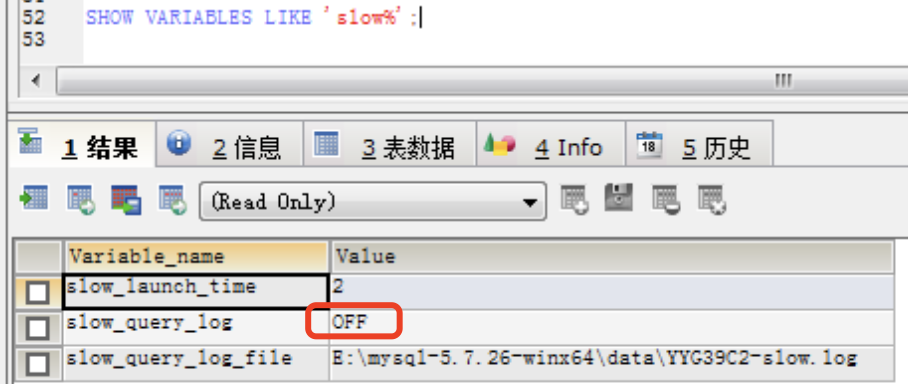
高薪程序员&面试题精讲系列91之Limit 20000加载很慢怎么解决?如何定位慢SQL?

Unity Odin ProgressBar add value column
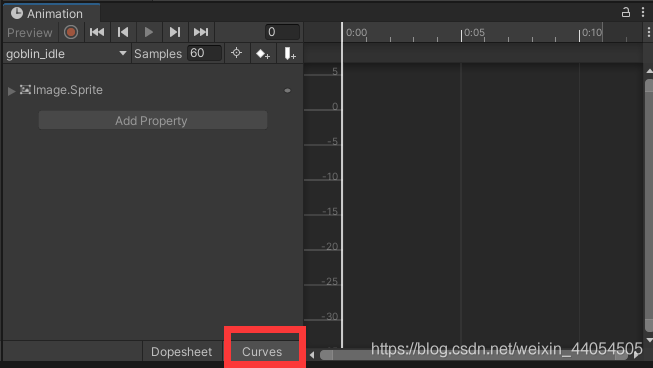
Unity animation creates sequence frame code and generates animationclip

Scripy tutorial - (2) write a simple crawler
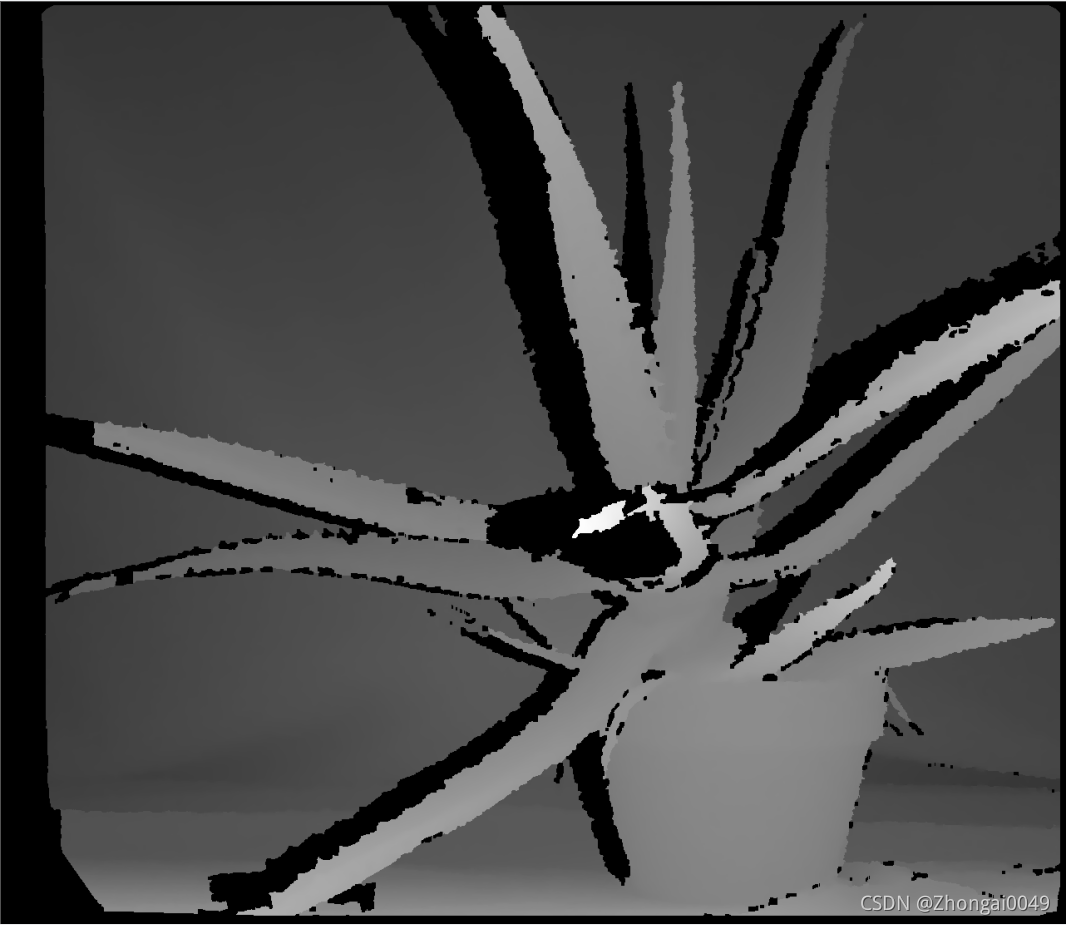
Summary and effect analysis of methods for calculating binocular parallax
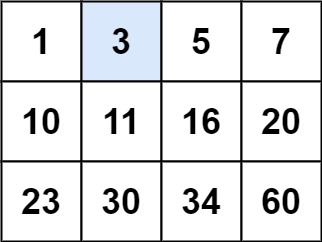
Leetcode 74. Search two-dimensional matrix

Devaxpress report replay: complete the drawing of conventional two-dimensional report + histogram + pie chart
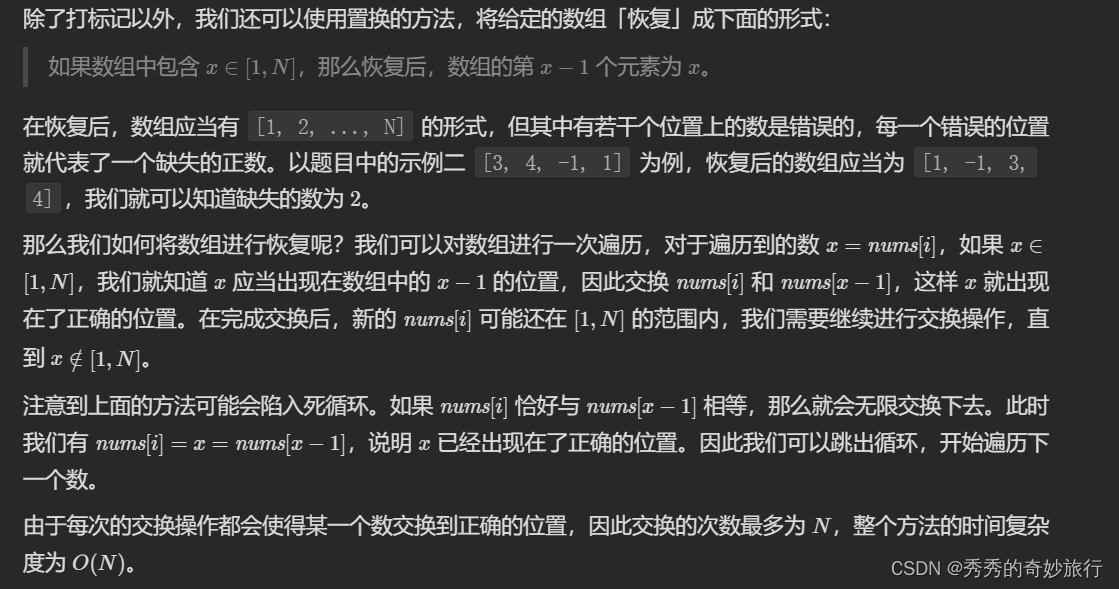
41. 缺失的第一个正数

中创存储|想要一个好用的分布式存储云盘,到底该怎么选

Mathematical modeling column | Part 5: MATLAB optimization model solving method (Part I): Standard Model
随机推荐
Unity ECS dots notes
go map
How can matlab obtain the truncated image in trainingimagelabeler
【PTA】L1-002 打印沙漏
JS arrow function user and processing method of converting arrow function into ordinary function
Introduction to standardization, regularization and normalization
Matlab: psychtoolbox installation
Leetcode 20. Valid parentheses
DOS command of Intranet penetration
Install MySQL 5.0 under Linux 64bit 6 - the root password cannot be modified
MySQL数据库常识之储存引擎
SQL: query duplicate data and delete duplicate data
Resolve the error - error identifier 'attr_ id‘ is not in camel case camelcase
黑客的入侵方式你知道几种?
启牛学堂有用吗,推荐的证券账户是否安全
GO语言开发天天生鲜项目第三天 案例-新闻发布系统二
Devexpress 14.1 installation record
BMP JPEG picture to vector image contourtrace
【PTA】整除光棍
Identification of bolt points in aerial photography based on perception